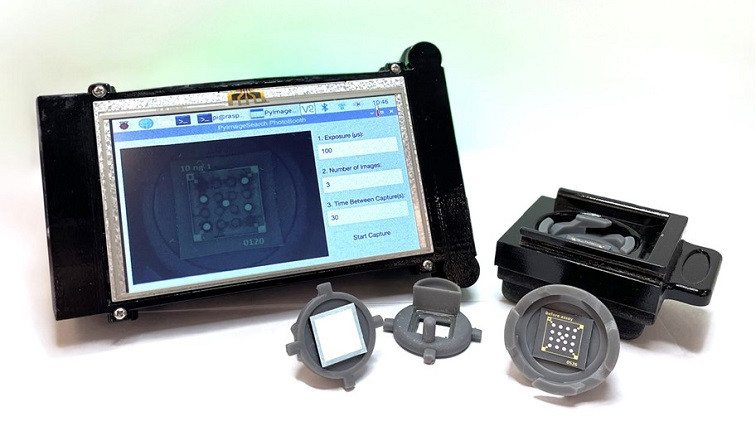Cardiovascular diseases (CVDs) remain the leading cause of death worldwide, accounting for over 19 million fatalities annually. Early detection of acute myocardial infarction (AMI), commonly known as a heart attack, is essential for improving patient outcomes and reducing mortality rates. However, the high costs and infrastructure requirements associated with traditional laboratory-based diagnostic equipment often limit access to high-quality care, particularly in low- and middle-income regions.
To address this challenge, UCLA researchers developed a high-sensitivity vertical flow assay (hs-VFA) that combines the precision of traditional laboratory testing with the convenience and affordability of point-of-care technologies. Their findings, detailed in a recently published paper in ACS Nano, demonstrate that this innovative platform can accurately quantify cTnI levels in just 15 minutes using a small sample of serum, making it ideal for rapid diagnostics in emergency settings or remote locations.
The core of this platform lies in the integration of deep learning algorithms with cutting-edge nanoparticle amplification chemistry. The hs-VFA system uses time-lapse imaging and computational analysis to enhance the detection of cTnIa key biomarker for cardiac damageachieving a detection limit as low as 0.2 picograms per milliliter (pg/mL). This level of sensitivity surpasses current point-of-care devices by a significant margin and meets the clinical requirements for high-sensitivity troponin testing, which is essential for the early diagnosis of AMI.
“We are excited to introduce this low-cost, portable solution that bridges the gap between central laboratory diagnostics and point-of-care testing,” said Professor Aydogan Ozcan, the senior author of the study and the Volgenau Chair for Engineering Innovation at UCLA. Our paper-based platform, powered by deep learning, offers an effective alternative to the bulky, expensive instruments currently used in hospitals. It holds the promise of bringing advanced cardiac diagnostics to underserved populations globally.”
The hs-VFA system operates in two stages: an initial immunoassay phase followed by a signal amplification phase. In the immunoassay phase, the test uses gold nanoparticle conjugates to bind to cTnI in the serum. In the signal amplification phase, gold ions are catalyzed by nanoparticles, resulting in a color change that is captured by a custom-designed, portable reader. Deep learning algorithms then analyze these time-lapse images to enhance the sensitivity and accuracy of cTnI detection.
In rigorous testing using both spiked and clinical serum samples, the hs-VFA demonstrated high precision with a coefficient of variation (CV) of less than 7%. It also exhibited a strong correlation with gold-standard laboratory analyzers. Importantly, the hs-VFA also demonstrated an extensive dynamic range, covering cTnI concentrations from 0.2 pg/mL to 100 nanograms per milliliter (ng/mL). This range makes it suitable not only for diagnosing heart attacks but also for monitoring at-risk patients over time.
The cost-effectiveness of this platform is another key highlight. The paper-based assay costs less than $4 per test, while the portable reader, designed using a Raspberry Pi computer and off-the-shelf components, costs approximately $170 per unit. This affordability is crucial for expanding access to high-quality diagnostics in low-resource settings, where traditional laboratory infrastructure may be unavailable.
“Our goal was to design a system that could be used not only in hospitals but also in clinics, pharmacies, and even in ambulances,” said Dr. Gyeo-Re Han, the first author of the study and a postdoctoral researcher at UCLA. “The ability to rapidly detect and quantify troponin levels in diverse settings could enable faster, more effective treatment of heart attack patients, particularly during the critical prehospital phase of care.”
Beyond cardiac diagnostics, the researchers believe the hs-VFA platform could be adapted for other critical low-abundance biomarkers, broadening its potential applications to various areas of medical diagnostics. The portability, simplicity, and affordability of the platform position it as a viable alternative to centralized laboratory testing for many conditions, offering hope for improved health outcomes on a global scale.
This work was made possible through a collaboration between the UCLA Departments of Electrical & Computer Engineering (Ozcan Lab), Bioengineering (Di Carlo Lab), and the California NanoSystems Institute (CNSI). This research was supported by the US National Science Foundation (NSF) PATHS-UP Engineering Research Center.
Read the original article on University of California, Los Angeles (UCLA).







